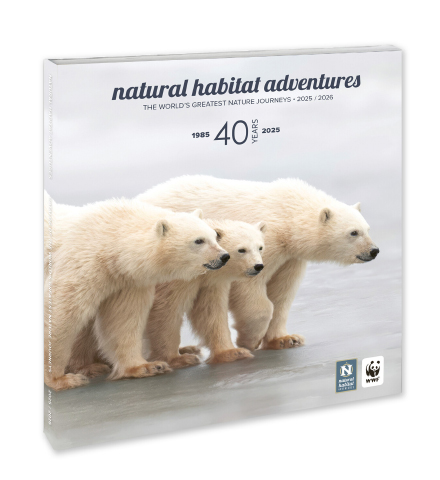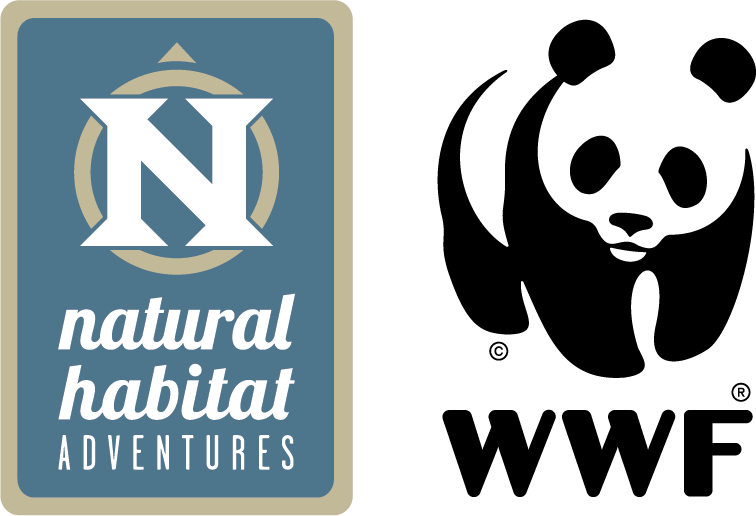On its finest days, summer feels like it could last forever. But, alas, all good things must come to an end. Or, when it comes to the seasons, sublimely shift into something new. As F. Scott Fitzgerald famously said, “Life starts all over again when it gets crisp in the fall.”
Deciduous trees know this best. Signaled by autumn’s softer temps and shortening days, they stop photosynthesizing and, in preparation for winter, draw nutrients from their leaves into their roots. Glorious greens, colored by chlorophyll, give way to yellow xanthophyll and orange carotenoid, pigments previously concealed. Deeper autumn days spur additional chemical processes that rouse red and purple pigments called anthocyanins. In lay terms, trees don new clothes and, in the process, put on one of nature’s finest and most flamboyant shows.

Quaking aspen tree bark contains a high amount of chlorophyll. Beneath the bark is a thin green photosynthetic layer that allows the tree to create sugars and grow when other deciduous trees would otherwise be dormant.
Unfortunately, climate change is warming our autumns, and with it, disrupting both the timing and length of this annual display. There’s good news, however. Fall colors and conservation go hand in hand at Natural Habitat Adventures. Crafted in concert with our partner, World Wildlife Fund, our tours are 100% carbon neutral, and our eco-first Expedition Leaders all know the best places and times to experience peak fall foliage.
Bonus: From coastal Maine and Quebec to California’s Yosemite Valley, each of the following leaf-peeping adventures travel in small groups and swap heavily touristed tracks for secret, off-the-beaten-path spots so autumn’s splendor can truly shine.
Whether you’re planning ahead for next year or angling for a last-minute autumn excursion, now’s the best time to book your tickets. So, break out those merino wool sweaters and top off your thermos with hot cider. It’s time to go leaf-peeping.
1. Maine: See Peak Views in the Pine Poplar Tree State
Maine may be known as the Pine Tree State, but come autumn, the fiery poplars, beeches, maples and oaks that help define its deciduous forests all lobby fiercely for a moniker change. Nat Hab travelers can see them make their case on a seven-day Maine Coastal Explorer. Take in the colors while staying in a 200-year-old farmhouse turned boutique inn in Bangor, sailing aboard a historic windjammer in Camden’s Penobscot Bay, and strolling along the sylvan shorelines of Deer Isle. The “Maine” event: leaf peeping within the 47,000 protected acres of woodlands, mountains, lakes and coastlines that comprise Acadia National Park.

© Michelle Beebe
More Local Color: Look for weathered, whitewashed barns while meandering on Highway 1 along Penobscot Bay and the Blue Hill Peninsula; multihued buoys during a cruise around Mount Desert Island aboard a working lobster boat and—even better—bright crimson lobsters while dining at Deer Isle’s eighteenth-century Pilgrim’s Inn; and a pretty pink sunrise lighting up Bar Harbor from atop Cadillac Mountain, Acadia’s highest peak.
2. Iceland: Circle the Land of Ice & Fire
Shorter fall days and changing temperatures transform Iceland’s green summer tundra into a stunning display of gold and crimson hues. These autumn colors stand in stark contrast against pewter cliffs and mountains, rugged coastlines and hardened lava. Dark skies return after a bright Arctic summer, and with them comes the potential to see the northern lights. Wildlife encounters center around whales and elusive mammals like the Arctic fox. To explore Iceland in this quiet season before winter’s onset is to experience its pure and powerful nature as few others do.
More Local Color: Explore less-visited areas including the far-flung Westfjords, with a private boat cruise to see whales and a seasonal summer puffin colony; and make a complete circle around Iceland by private mini bus, chartered plane, boat and 4×4—you won’t find a more thorough immersion in Icelandic nature.
3. Vermont: Hop on that Bike and Ride
This is how we roll in the Green Mountain State: a private four-day bike tour amid leaf-peeping’s peak. Led by seasoned guides at Duvine, one of Nat Hab’s travel partners, cyclists hop on their choice of road, hybrid or electric bikes, select a route rating and then set out for stunning fall foliage on spins that wend, say, along the Ottauquechee River, through the historic Taftsville Covered Bridge and to Silver Lake for a timely dip. Along the way, well-deserved picnics at local farms, a tasting at the Plymouth Cheese Factory and hand-churned ice cream at the Barnard General Store await.
More Local Color: Look for fresh greens and other locally grown produce while dining at farm-to-table restaurants each evening; flavors like Blackbeary Wheat and Green Blaze IPA during a tasting at Long Trail Brewery in Bridgewater Corners; and the collection of colors and creativity on display at Simon Pearce’s glassblowing workshop in Quechee.
4. Churchill’s Changing Tundra
Fall doesn’t just bring changing colors. It also heralds the largest gathering of polar bears in the wild along the shores of Hudson Bay in Churchill, Canada! This spectacle is one of nature’s most wondrous wildlife encounters—and one you can experience on our Canada’s Premier Polar Bear Adventure.

© Colby J Brokvist
More Local Color: Although late-fall departures are usually characterized by snowy weather, October offers opportunities to witness the tundra and boreal forest in all their autumn glory.
5. Wyoming: Have Yellowstone More to Yourself
How do we love Yellowstone National Park in the fall? Let us count the ways: 1. fewer visitors (summer crowds to America’s first—and most visited—national park have thinned out); 2. better photo ops (fewer people means less likelihood your Old Faithful pics will be photobombed); 3. increased wildlife sightings (many species are on the move while preparing for winter); and 4. brilliant bursts of fall colors (think red-leafed shrubs, golden aspens and bright yellow cottonwoods).
Nat Hab’s small-group, seven-day Hidden Yellowstone & Grand Teton Safari provides ample time—and space—to absorb it all within the park’s remote corners and off-the-radar spots.

Grand Tetons © Kurt Johnson
More Local Color: Look for brown bears along the shores of Yellowstone Lake; grey wolves in the Lamar Valley while getting the facts about this keystone species from wolf biologists; and millions of microscopic thermophiles that dye the park’s hydrothermal features in a kaleidoscope of colors.
6. Montana: Fall for Glacier National Park—Twice
Glacier’s so fond of fall, it celebrates the season twice. First, when aspens and cottonwoods flip their autumnal switch and illuminate the park’s lower elevations. And second, when its western larches, a deciduous conifer frequently found in the park’s western slopes, turn gold before shedding their needles ahead of winter.
Travelers can commemorate both transitions with aptly named Off the Beaten Path, one of Nat Hab’s travel partners, via a series of seven-to-seventeen-day small-group and custom-made adventures (activity levels range from “no sweat” to “high five!”) that also take in the best of the park’s glacier-carved mountains, gushing waterfalls and blue-green lakes.

More Local Color: Look for creamy white mountain goats while ascending Going-to-the-Sun Road; whitewater rapids on a rafting trip along the Middle Fork of the Flathead River; and yellow perch and rainbow trout while fly fishing Whitefish Lake.
7. Arizona & Utah: Be Illuminated in Bryce, Zion & the Grand Canyon
As if red rock country weren’t colorful enough, Bryce Canyon, Zion and Grand Canyon national parks really pop in autumn, punctuated by spectacular spurts from Gambel oaks, aspens and cottonwoods. Fall foliage, cooler temps and thinner crowds make autumn an optimal time to visit each park, particularly when enjoyed on Nat Hab’s eight-day Grand Canyon, Bryce & Zion national parks adventure. Our in-the-know Expedition Leaders seek out secret spots and less-visited lookouts so guests can, say, watch the sunset sparkle on the Grand Canyon’s South Rim in silence.

Virgin River, Zion National Park
More Local Color: Look for multi-hued sedimentary layers in the Grand Canyon; Bryce Canyon’s pink sandstone hoodoos during a thrilling helicopter flight; and vibrant Navajo sand paintings and other authentic Native American crafts during a visit to the Cameron Trading Post on the Navajo Nation.
8. Scotland: Lochs, Leaves & More
Scotland in the fall is a time filled with quieter discovery and the absolute splendor of a colorful, changing landscape, and September and October departures on Nat Hab’s nine-day Scotland’s Wild Highlands & Islands provide ample leaf-peeping opportunities. The weather is temperate and brilliant foliage abounds, with red and orange leaves and golden grasses lighting up the Scottish Highlands—making them more photogenic than ever.
Dropping leaves means it’s easier to spot wildlife too. And you’re likely to capture that travel-back-in-time feeling when it comes to visiting iconic sites like the Callanish Standing Stones and Eilean Donan Castle, since summer’s crowds have subsided.
More Local Color: There are typically fewer puffins this time of year, but seeing the red deer rut is a spectacle to behold on this nature-focused itinerary!


























